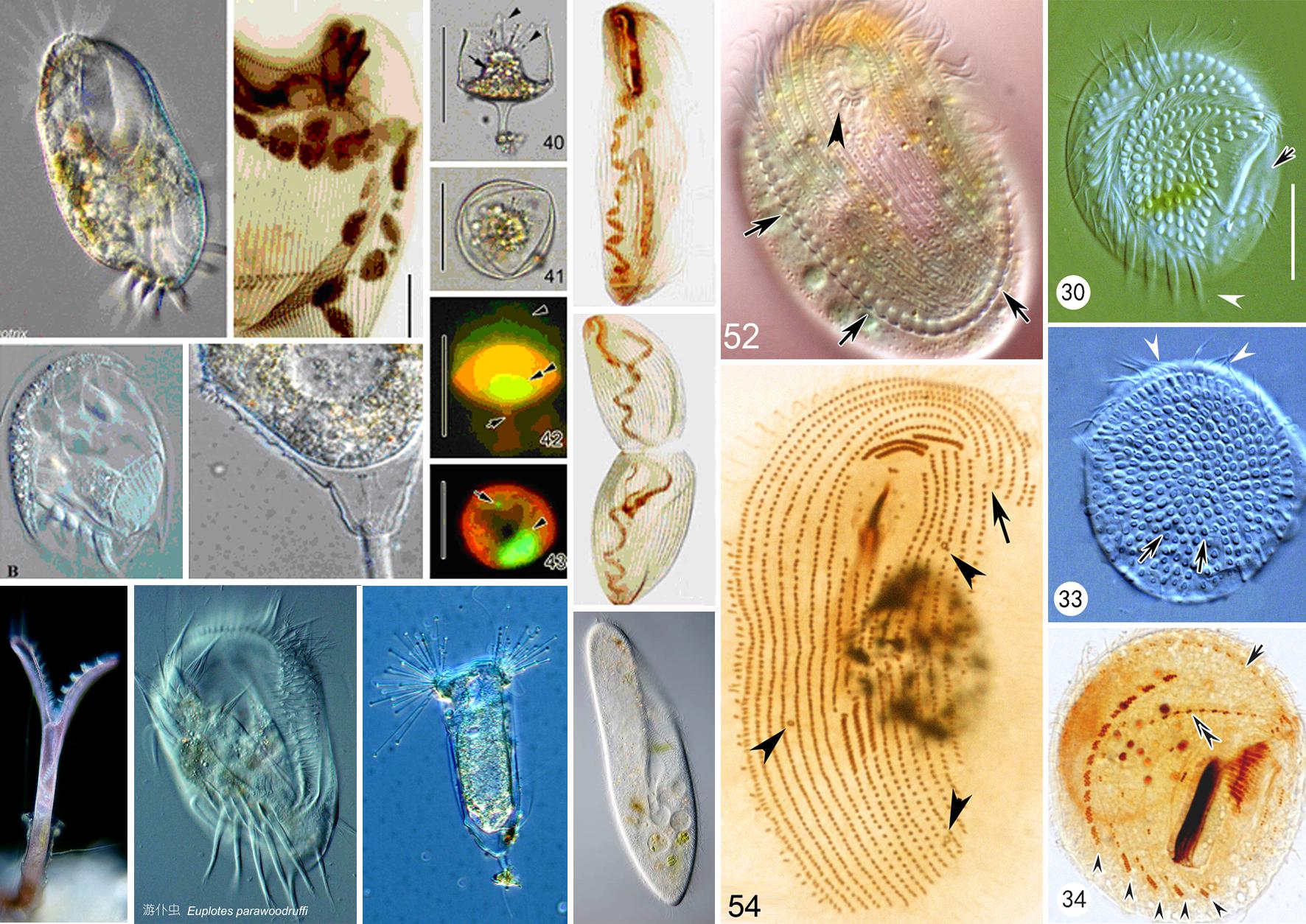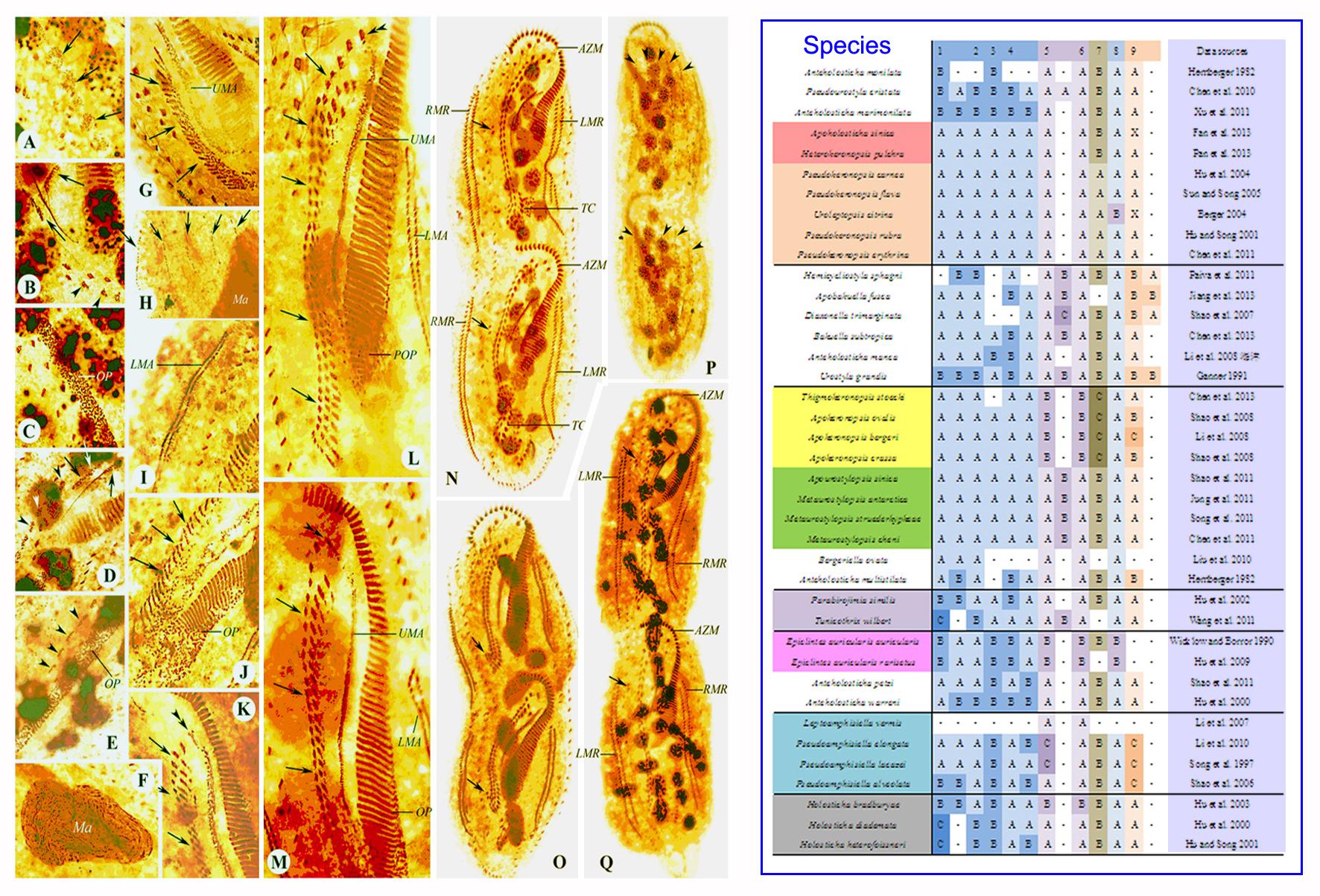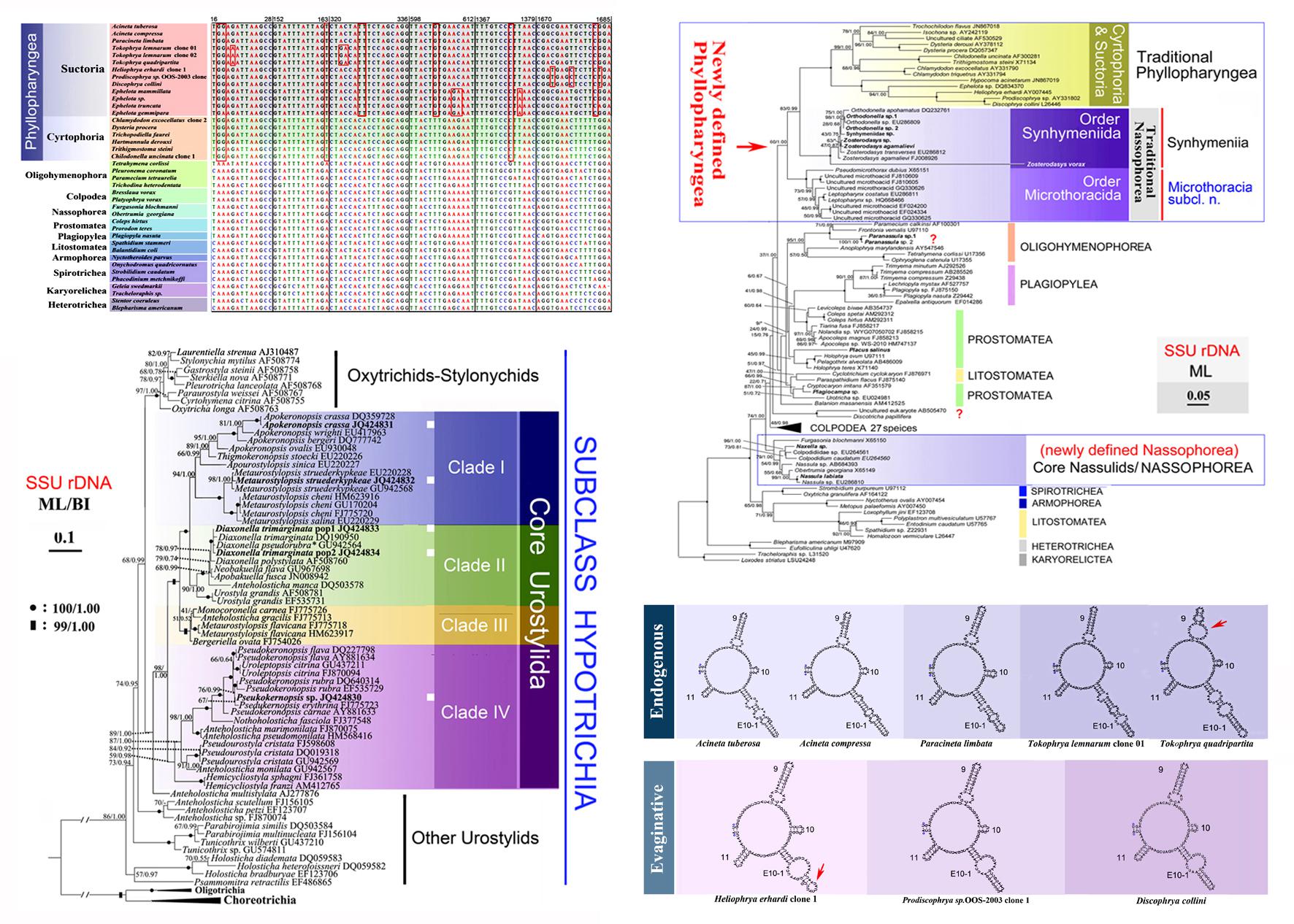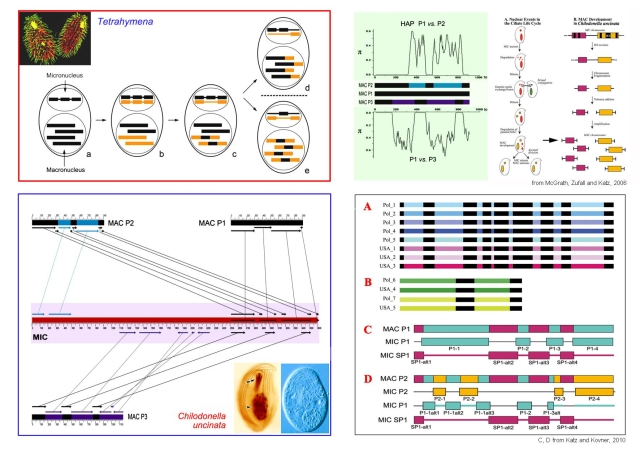 Weibo Song
Weibo Song
Professor, Laboratory of Protozoology
Department of Aquaculture, Fisheries College,
Institute of Evolution & Marine Biodiversity
Ocean University of China
5 Yushan Road, Phone: 86-532-82032283
Qingdao 266003, Fax: 86-532-82032283
P. R. China Email: wsong@ouc.edu.cn
EDUCATION
BS, Aquaculture, Shandong Institute of Oceanology, 1982
MS, Protozoology, Shandong Institute of Oceanology, 1985
PhD, Protozoology, Bonn University, Germany, 1989
RESEARCH
Research Interests:
My research focuses on morphology and taxonomy, cell development, molecular phylogeny and genome evolution of ciliated protozoa.
Specific Research Directions:
1. Diversity and taxonomy of ciliates. Mainly concerns morphological taxonomy, species diversity and the spatial/temporal distribution of ciliates in various marine biotopes. Research work includes: the redescription of poorly known taxa, the redefinition of forms that are deemed invalid under the Code of Zoological Nomenclature, and the discovery and description of new taxa. It aims to underpin the disciplines of environmental biology and aquatic ecology thereby enhancing the protection and sustainable utilization of natural resources

2.Cell development of ciliates. Mainly focuses on pattern formation of cortical structures and the nuclear apparatus, differentiation of new structures and the fate of old ones during cell division. It aims to provide morphogenetic data for exploring the origin and evolution of ciliates and to reconstruct their phylogeny.

3. Phylogenetics and systematics of ciliates. Mainly focuses on expanding taxonomic sampling for the sequencing of molecular markers and secondary structure analysis, and to use these data for reconstructing phylogenies thereby increasing our knowledge and understanding of the evolutionary relationships within and among different groups of ciliates. In addition, this work contributes to the construction of the marine ciliate DNA bank which is a resource of global importance for the study of marine ciliate diversity and systematics.
 4. Genome evolution and gene functional study of ciliates. Mainly focuses on the patterns and mechanisms of genome rearrangements during sexual conjugation. We also study the function of genes involved in genome rearrangement using ciliate model organisms like Tetrahymena. These studies yield important insights into the genome evolution and gene function studies in eukaryotes.
4. Genome evolution and gene functional study of ciliates. Mainly focuses on the patterns and mechanisms of genome rearrangements during sexual conjugation. We also study the function of genes involved in genome rearrangement using ciliate model organisms like Tetrahymena. These studies yield important insights into the genome evolution and gene function studies in eukaryotes.

Current Research Projects (recent 10 years):
§ Ciliates, important models of cell development, pattern formation and phylogeny, National Natural Science Foundation of China (Key Program, Grant No. 31030059),2011-2014
§ Research Coordination Network for Biodiversity of Ciliates, International Cooperation and Exchanges NSFC (Grant No. 31111120437), 2012-2016
§ Studies on karyorelictean ciliates along the coast of Yellow Sea, National Natural Science Foundation of China (General Program, Grant No. 41276139), 2012-2016
§ Conservation of Jiaozhou Bay: Biodiversity assessment and biomonitoring using ciliates, UK Royal Society Darwin Initiative Programme (Grant No. 14-015), 2005-2009
§ Cell differentiation and morphogenetic pattern of ciliated protozoa as well as taxonomy and systematic construction of important marine taxa, National Natural Science Foundation of China (Key Program, Grant No. 31030059),2005-2008
Honors:
§ 2013-, President of the Chinese Society of Protozoologists
§ 2009-, Vice president of the Chinese Society of Zoology
§ 2008, first prize of the Education Ministry Natural Science Award with 1st place
§ 2005, Winner of “Ciliate Cravat Award” (year 2005) by the ISoP
§ 2004, second prize of the National Natural Science Award with 1st place
§ 2004, first prize of the Education Ministry Natural Science Award with 1st place
§ 2001, first prize of Natural Science Award of Chinese High Educational Science and Technology with 2nd place
§ 1999, Special fellowship from the Chinese Ministry of Education, “the Chung Kung Scholarship Programme”
§ 1992, Award-winner of “Wilhelm & Ilse Foissner Stiftung”
PUBLICATION (recent 10 years)
Huang J., Chen Z., Song W. & Berger H. 2014. Three-gene based phylogeny of the Urostyloidea (Protista, Ciliophora, Hypotricha), with notes on classification of some core taxa. Mol. Phylogenet. Evol. 70: 337-347.
Zhang Q., Yi Z., Fan X., Warren A., Gong J. & Song W. 2014. Further insights into the phylogeny of two ciliate classesNassophorea and Prostomatea (Protista, Ciliophora). Mol. Phylogenet. Evol.70:162-170.
Chen X. M., Shao C., Lin X., Clamp J. C. & Song W. 2013. Morphology and molecular phylogeny of two new brackish-water species of Amphisiella (Ciliophora, Hypotrichia), with notes on morphogenesis. Eur. J. Protistol. 49: 453-466.
Gao F., Katz L. A. & Song W.2013. Multigene-based analyses on evolutionary phylogeny of two controversial ciliate orders: Pleuronematida and Loxocephalida (Protista, Ciliophora, Oligohymenophorea). Mol. Phylogenet. Evol. 68: 55-63.
Jiang J., Xing Y., Miao M., Shao C., Warren A. & Song W. 2013. Twonew marine ciliates, Caryotricha rariseta n. sp. and Discocephalus pararotatorius n. sp. (Ciliophora, Spirotrichea), with phylogenetic analyses inferred from the small-subunit rRNA gene sequences. J. Eukaryot. Microbiol. 60: 388-398.
Li J. M., Liu W., Gao S., Warren A. & Song W. 2013. Multigene-based analyses of the phylogenetic evolution of oligotrich ciliates, with consideration of the internal transcribed spacer 2 secondary structure of three systematically ambiguous genera. Eukaryot. Cell. 12:430-437.
Pan H. B., Li L., Al-Rasheid A.S. & Song W. 2013. Morphological and molecular description of three new species of the cyrtophorid genus Chlamydodon (Ciliophora, Cyrtophoria). J. Eukaryot. Microbiol. 60: 2-12.
Pan H. B., Gao F., Lin X., Warren A. & Song W. 2013. Three new Loxophyllum species (Ciliophora: Pleurostomatida) from China with a brief review of the marine and brackish Loxophyllum species. J. Eukaryot. Microbiol. 60: 44-56.
Pan X. M., Gao F., Liu W., Fan X., Warren A. & Song W. 2013. Morphology and SSU rRNA gene sequences of three Frontonia species, including a description ofF. subtropica spec.nov. (Ciliophora, Peniculida). Eur. J. Protistol. 49: 67-77.
Pan X.M., Bourland W. A. & Song W.2013. Protargol synthesis: an in-house protocol. J. Eukaryot. Microbiol. 60: 609-614.
Shao C., Al-Rasheid K.A.S., Al-Farraj S. A., Warren A. & Song W. 2013. Establishment of a new hypotrichous genus, Heterotachysoma n. gen. and notes on the morphogenesis of Hemigastrostyla enigmatica (Ciliophora, Hypotrichia). Eur. J. Protistol. 49: 93-105.
Song W., Li J., Liu W., Jiang J., Al-Rasheid K. A. S. & Hu X. 2013. Taxonomy, morphology and molecular systematics of three oligotrich ciliates, including a description of Apostrombidium parakielum spec. nov. (Ciliophora, Oligotrichia). Int. J. Syst. Evol. Microbiol. 63: 1179-1191.
Xu Y., Shao C., Miao M. & Song W. 2013. Redescription of Parasonderia vestita (Kahl, 1928) comb. nov. (Ciliophora, Plagiopylida), with notes on its phylogeny based on SSU rRNA gene.Eur. J. Protistol. 49: 106-113.
Xu Y., Gao S., Hu X., Khaled A. S. Al-Rasheid &Song W. 2013. Phylogeny and systematic revision of the karyorelictid genus Remanella (Ciliophora, Karyorelictea) with descriptions of two new species. Eur. J. Protistol. 49: 438-452.
Xu Y., Li J., Song W. & Warren A. 2013. Phylogeny and establishment of a new ciliate family, Wilbertomorphidae fam. nov. (Ciliophora, Karyorelictea), a highly specialized taxon represented by Wilbertomorpha colpoda gen. nov., spec. nov. J. Eukaryot. Microbiol. 60: 480-489.